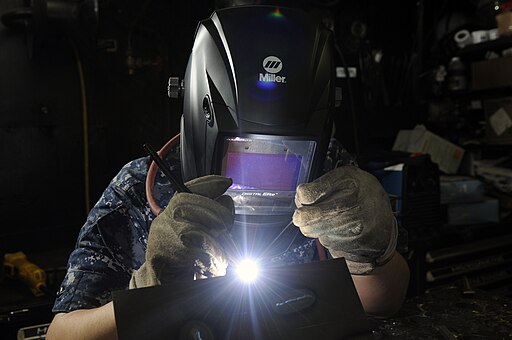Search
A jury will decide whether a quadriplegic welder will win his disability discrimination claim
Yeah, I thought you’d click on this one.
From the blog that brought you the Americans with Disabilities Act claims of the bridge worker with a fear of heights, the firefighter afraid of fighting fires, and the utility person who could climb utility poles, comes the quadriplegic welder and his claims of disability discrimination.
The plaintiff in this case was a welder, covered by a collective bargaining agreement. On May 1, 2011, an off-duty motorcycle accident caused him to be a quadriplegic. After his FMLA expired, the plaintiff’s doctor wrote to the company stating that the plaintiff was paralyzed and could not return to work. A second doctor’s note stated that the plaintiff “will be permanently out of work.” Consequently, the company extended the plaintiff’s leave through during of its two-year leave program.
During the course of the plaintiff’s leave, his doctor wrote to the company that his patient could return with the following restrictions: no climbing, working at heights or tight spaces, lifting over five to ten pounds, or other manual labor. So, the company convened a reasonable accommodation committee to determine whether the plaintiff could return as a welder, after which it met with the plaintiff, who advised the company of ways he could contribute to the company. The company did consider the plaintiff for an opening in another position, but he was not hired.
The plaintiff then sent another letter to the company reaffirming his desire to return. However, the company terminated his employment because the plaintiff had exceeded his two-year leave of absence.
So he sued for disability discrimination.
The interactive process is ongoing.
Now, while the court did determine that the plaintiff could not perform the essential functions of the welding positions (and, therefore, could not make out a prima facie claim of disability discrimination), it reached a different conclusion on the plaintiff’s failure-to-accommodate claim. Much like the Americans with Disabilities Act, CA’s state law (under which this case was decided) requires a good-faith interactive process between an employer and employee with a disability, with the goal of identifying an accommodation that allows the employee to perform the job effectively. The employee initiates the process. But, once the employee does that, then the employer must continue the process in good faith, unless the employee obstructs the process.
Here, the company claimed that had an interactive dialogue with the employee, until the employee broke it off. The court disagreed:
It is undisputed that in June 2012, Plaintiff met with Northrop managers and Union representatives to discuss his work restrictions and potential accommodations. It is also undisputed that Plaintiff subsequently interviewed with Northrop for an open tool stock controller position. Although Northrop began to engage in the interactive process, it had a continuing obligation to engage beyond these first attempts. Indeed, California law supports the proposition that when Northrop became aware Plaintiff was not hired for the tool stock controller position, Northrop had the continued obligation to engage in the interactive process and find another potential accommodation. Therefore, Northrop’s argument that its obligation ended when it offered Plaintiff an interview is unpersuasive.
And this obligation continued after the plaintiff subsequently wrote to the company reaffirming his desire to return. The company defended by arguing that the plaintiff failed to identify a job for which he was qualified. However, the court determined that the company was in a better position to inform the plaintiff of vacant positions for which he was qualified.
Employer takeaways.
For starters, you never want to proverbially judge a book by its cover. Literally is ok. I recently judged The Walking Dead Second Compendium to be awesome. And, I was right. But, if an employee with a disability requests an accommodation, you need to have a good faith interactive dialogue with the employee.
Next, if all else fails, don’t forget about a finite period of leave as a reasonable accommodation. Assuming that leave won’t create undue hardship — and here, the employer had a two-year leave policy, so, it knew that two years was the low bar — provide it.
Finally, remember that the duty to accommodate is continuing. So, communication is key. Follow-up with workers with disabilities to ensure that the accommodation(s) that you provided continue to enable them to perform the essential job functions. And, if not, discuss with the employee what else could work.
 The Employer Handbook Blog
The Employer Handbook Blog



